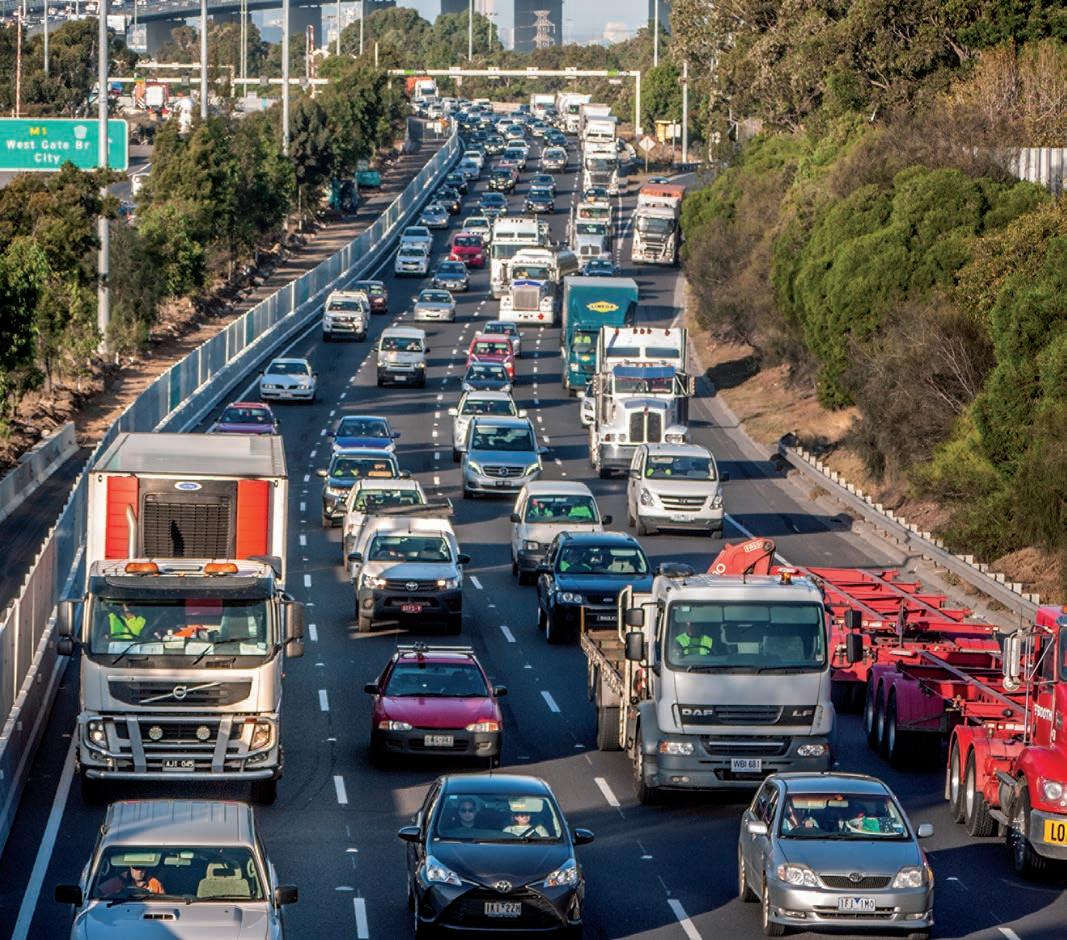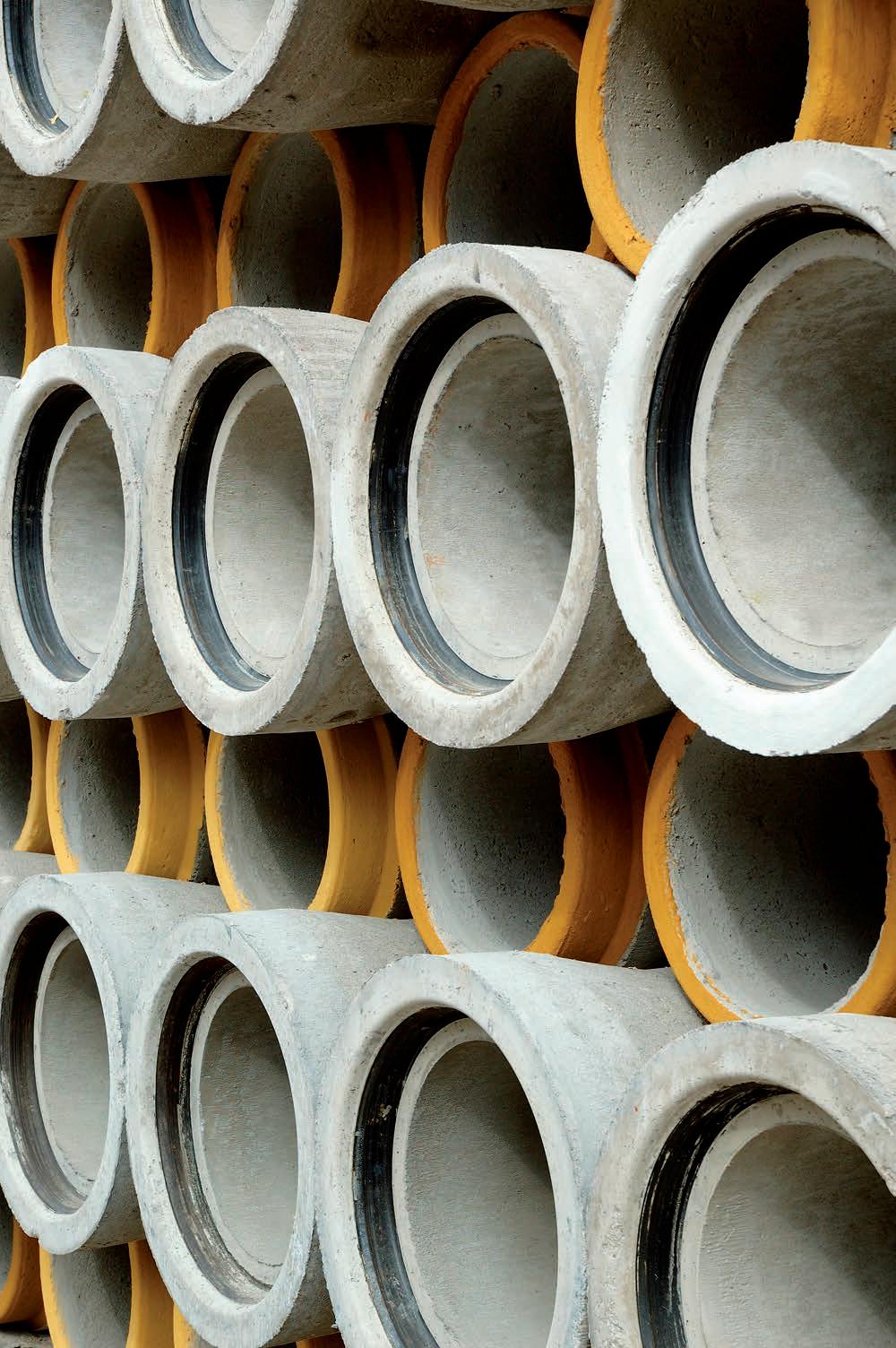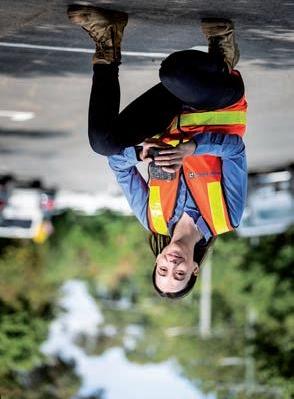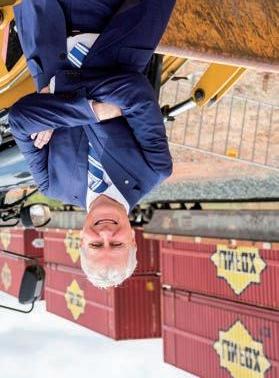
10 minute read
Infrastructure Victoria
THE ROAD AHEAD
INFRASTRUCTURE VICTORIA HAS LAID OUT A MULTIFACETED PLAN TO TACKLE THE STATE’S CONGESTION AND POPULATION CHALLENGES. ROADS & INFRASTRUCTURE EXPLORES HOW THESE PLANS ARE EXPECTED TO SHAPE UP IN 2020 IN THE LEAD UP TO A NEW 30-YEAR DRAFT INFRASTRUCTURE STRATEGY.
Managing the state’s congestion issues, infrastructure and transport planning may not be front of everyone’s minds during this time, but the issues are still very much on the agenda.
Independent advisory body Infrastructure Victoria (IV) has been continuing its work to produce a draft 30-year infrastructure strategy. Expected in October this year, a final version is planned to be released in mid 2021 and tabled in parliament.
Released in 2019, Growing Victoria’s potential: the opportunities and challenges of Victoria’s population growth set the scene for the strategy update by highlighting the key talking points tipped to manage a state on track to become Australia’s most populous city.
Some of the initial conversation starters were the need to increase population
density to accommodate growth, targeted regional investment to address challenges and opportunities and planning and delivering infrastructure in a manner consistent with how people want to live and work.
While Melbourne will continue to be a low-density city, the report highlights that increased densification could help improve the level of infrastructure and services governments can provide to the community.
Jonathan Spear, Deputy Chief Executive and Chief Operating Officer at IV, says that in addition to the focus on regional Victoria’s needs, making use of infrastructure better and improving on its delivery, a timely focus is: how do we deal with change?
“There’s some well-known changes that we have to deal with over time, [including] climate change and some of the known technology changes like increased automation, and changes in the energy system,” Mr. Spear says.
He adds that IV is also looking at the role infrastructure plays in building resilience.
“Classic examples at the moment are both the bushfires and COVID-19 pandemic and the role of infrastructure there.”
He says this is what stakeholders have told IV and what it has subsequently been working on. Mr. Spear says that IV has been thinking about the role of infrastructure in facing challenges such as climate change, population growth or technology.
“There will be lots of lessons to be learnt from both bushfires and the current pandemic that we will be reflecting on when we can, when we release the draft strategy later in the year,” Mr. Spear says.
“A key theme of IV’s work is integration of land use and infrastructure planning. Because a lot of the benefits that you get: socially, environmentally and economically are when you get that right,” Mr. Spear explains.
When it comes to the regions, IV’s 2019 report developed profiles for each of the reasons to understand their needs. The report highlights a focus on leveraging existing rail and road infrastructure, improving transport links and fit-forpurpose infrastructure. Conversely, it appears to caution against using the regions to relieve pressure on Melbourne.
“We don’t think moving a large number of people through Melbourne to the regions say through a fast rail is going to make much of a difference to Melbourne’s growth challenges or necessarily help those regional cities,” Mr. Spear says.
“There are a range of reasons why you give regional cities good transport connections to Melbourne, but we don’t think that reducing population pressure in Melbourne is one of them.”
One of the models that Infrastructure Victoria is looking at to reduce congestion is transport network pricing – a focus detailed in its Good move fixing transport congestion report. This means a shift away from fixed upfront charges such as registration towards usage-based charges, focusing on distance travelled, time of day and mode of travel.
Mr. Spear points out that while there’s not much congestion now on the roads and on the public transport system (for obvious reasons), he highlights the risk of returning back to where we were previously.
“Unless we make a change to our behaviour we are going to back to the sort of congestion we saw before this pandemic,” Mr. Spear says.
“That’s why we think it’s a really good time
Infrastructure Victoria research shows up to 85 per cent of people could pay less than they do today for transport.

to be thinking about, do we make a change in our behaviour to have at least a little bit of that reduced congestion and public transport crowding for the long run?”
As a behavioural change model, the desired result of usage-based charges is to see demand for transport spread evenly through the day. This aims to lead to reduced travel costs and more predictable travel times by encouraging people to shift to other modes of travel. Additionally, it may postpone the need for additional large-scale infrastructure projects as we make the best use of what’s already there.
Infrastructure Victoria research shows up to 85 per cent of people could pay less than they do today for transport, with modelling showing up to 168,000 car trips could be taken off Victorian roads each day. More than 40 per cent of those who would drive to the cordon area would make the shift to public transport, modelling shows.
Mr. Spear says that if we don’t make a change in our behaviour, in the next 10 years there will be millions more trips on the road each day, resulting in delays, frustrations and reductions in economic productivity. Its report into this issue finds a business-as-usual approach would lead to an additional $5.6 billion in time, operating costs and pollution by 2030 when compared to 2015 numbers. Congestion is expected to cost Melburnians an extra $1700 per year by 2030 on average. The research shows that it has worked well in areas such as Stockholm, London and Milan, with Stockholm citing sustained reductions in the cordon of around 20 per cent.
“People have told us that they’re willing to accept that change and we’ve actually polled people and about one in four have told us previously they could change the time that they do a journey if they were actually forced to think about it.”
In terms of whether an increase in people working from home will have some kind of indefinite reduction in congestion, Mr Spear says it’s too soon to tell.

Stockholm has experienced sustained reductions in the cordon as a result of a move to a new pricing scheme for congestion.
“It is really unknown if what we’re currently facing is going to roll through to ongoing behavioural change,” he says.
“What we do know is that with congestion we’re seeing big congestion reductions at the moment and we’re not going to retain that level of journey reduction and nor should we, because of the restrictions it has on people’s movement and freedom and the economic effects.”
In response to issues such as population growth and climate change, IV has completed extensive work on the increased uptake of automated and zero emissions vehicles.
As part of this broader focus on usage based charges, Mr. Spear proposes that relieving motorists of registration in favour of the new model could be trialled on electric vehicles to lower the barriers to entry and make their usage more attractive.
Another area of focus as part of this is a new approach is pricing parking, with parking prices varying over time and across locations. This could be beneficial where demand for provided parking fluctuates considerably. He says like other vehicles, EVs should pay for kilometres travelled, but this should reflect their contribution to congestion.
Concepts such as mobility as a service could hold potential to further free up the road network. While Mr. Spear acknowledges mobility as a service will potentially reduce the need for parking, there could be other implications.
“What they do bring in is more pick-up and drop-off spaces are often required and so our work on automated vehicles also found the need for that as something we plan for in the future,” he says.
“The other part of mobility as a service is the great thing about that is it gives you all your travel choices. How to get to A to B, on a menu with the journey, planning of pricing ahead of time, and so you could certainly include parking as part of that package of choices that you make.”
And with the draft report not due until the end of the year, Mr Spear says some of the areas of infrastructure needed to support the management of growth areas range from schools to energy and waste management.

DON’T MISS AN ISSUE, SUBSCRIBE TODAY roadsonline.com.au/subscribe

ROADS & INFRASTRUCTURE AUSTRALIA is the industry’s top resource for the latest developments, and in-depth features.
MARCH 2020
& INFRASTRUCTURE

A NOVEL SOLUTION
Fulton Hogan’s Noriko Wood highlights revolutionary new recycled asphalt product.
APRIL 2020
ROADS
&
INFRASTRUCTURE
AUSTRALIA
APRIL 2020
& INFRASTRUCTURE
RESILIENT ROADS

Cross River Rail Delivery
Authority’s Graeme Newton on supporting the road network with major projects.
MAY 2020
& INFRASTRUCTURE

Federal Government Infrastructure Minister Michael McCormack on the continued infrastructure pipeline.
Official media partners of
WHAT’S THE RAP?
Analysing RAP limits
FISHERMANS BEND
Australia’s largest urban renewal
AUSTRALIA’S ONLY SPECIALIST ROAD MANAGEMENT, CONSTRUCTION AND CIVIL WORKS MAGAZINE
Official media partners of
LOW TRAFFIC ROADS
New crumb rubber specifications
CONEXPO WRAP-UP
All the latest construction news
AUSTRALIA’S ONLY SPECIALIST ROAD MANAGEMENT, CONSTRUCTION AND CIVIL WORKS MAGAZINE
Official media partners of
OFFICE OF FUTURE TRANSPORT
ARRB highlights future tech PLANNING DURING COVID
Reducing congestion in Victoria
AUSTRALIA’S ONLY SPECIALIST ROAD MANAGEMENT, CONSTRUCTION AND CIVIL WORKS MAGAZINE
AUSTRALIA’S ONLY SPECIALIST ROAD MANAGEMENT, CONSTRUCTION AND CIVIL WORKS MAGAZINE AUSTRALIA’S ONLY SPECIALIST ROAD MANAGEMENT, CONSTRUCTION AND CIVIL WORKS MAGAZINE AUSTRALIA’S ONLY SPECIALIST ROAD MANAGEMENT, CONSTRUCTION AND CIVIL WORKS MAGAZINE
Official media partners of OFFICE OF FUTURE TRANSPORT
ARRB highlights future tech
PLANNING DURING COVID
Reducing congestion in Victoria
Official media partners of WHAT’S THE RAP?
Analysing RAP limits
FISHERMANS BEND
Australia’s largest urban renewal Official media partners of
LOW TRAFFIC ROADS
New crumb rubber specifications
CONEXPO WRAP-UP
All the latest construction news With increasing emphasis on the need to upgrade Australia’s road network, nationally and locally, and the need to deal with worsening congestion in our cities, ROADS



& INFRASTRUCTURE “WE’RE NOT STOPPING”
Federal Government Infrastructure Minister Michael McCormack on the continued infrastructure pipeline.
& INFRASTRUCTURE A NOVEL SOLUTION
Fulton Hogan’s Noriko Wood highlights revolutionary new recycled asphalt product.
ROADS
&
INFRASTRUCTURE
AUSTRALIA APRIL 2020
& INFRASTRUCTURE RESILIENT ROADS
Cross River Rail Delivery Authority’s Graeme Newton on supporting the road network with major projects. provides a window on developments in the roads construction sector. Roads & Infrastructure Australia is published monthly and contains articles/segments from industry associations and advocacy groups, technical papers from roads related conferences, details of major projects being undertaken around the country, specialised sections, a news roundup and new product releases. The specialised sections include road safety, intelligent transport systems, road building equipment, road and pavement maintenance, safety barrier systems and road marking.










